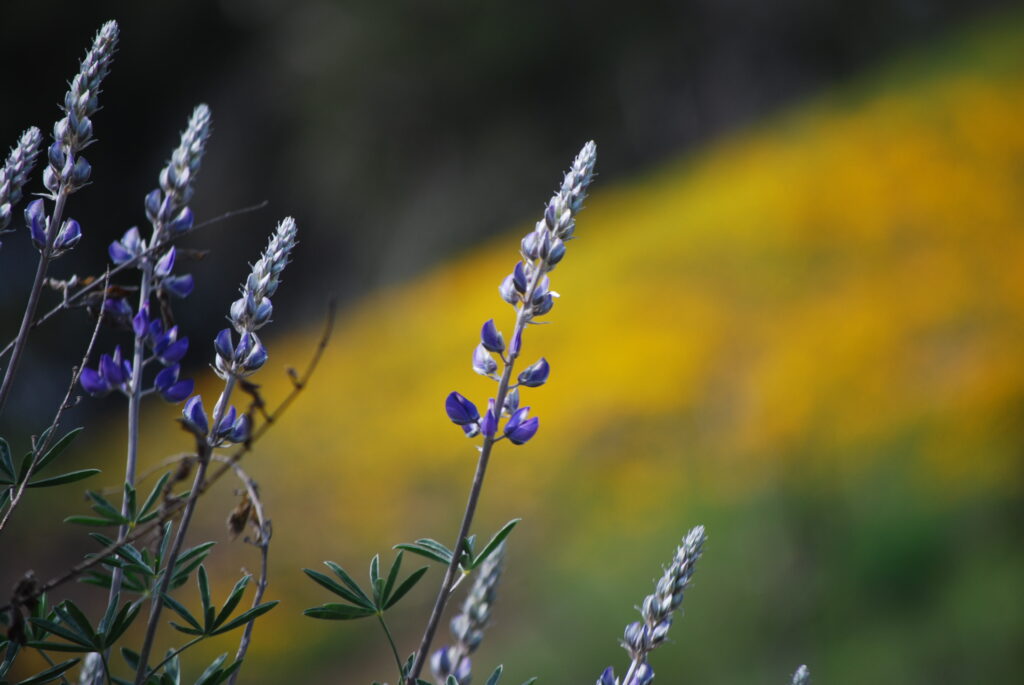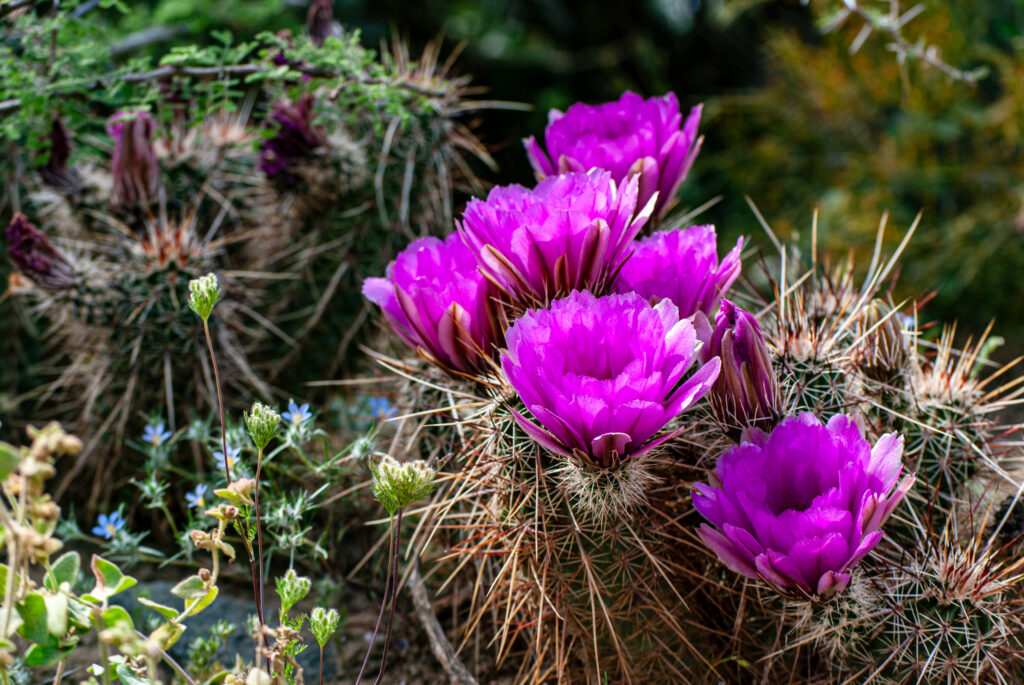How and Why

The photo of Lupins against a background of orange and yellow poppies. This image was achieved almost by accident. The day was bright with a slightly uneven breeze. Trying to get the foreground Bush Lupins so they were not blurry in the breeze required a fast shutter speed. I had to open the lens’s aperture to get enough light to make a balanced image. This created a narrow or short field of focus. Focusing on a point in front of the rightmost branch brought the branches with the flowers into the area of interest. The purple foreground overlays the soft orange-yellow of the out-of-focus poppies. The far-ground is large oak trees bereft of leaves. The light from the hillside behind the trees coming back through the trees gives a gray-green effect and creates a nice background.
This is why I try to encourage photographers not to use their cameras’ “automatic exposure” feature. The camera can not think or compose an image. This image would never have come out of “automatic exposure.” Only when you learn and understand the function of the exchange between the Camera’s aperture, shutter speed, and light sensitivity (ISO) can you get an idea of the possibilities of what you can achieve.
Several good websites explain this and will produce a depth-of-field chart for your camera and lens combination.
With digital cameras, this is an easy exercise. Set up a scene with several objects staged so they are not lined up. Set the focal plane of your camera is on the zero mark of your tape measure. Start with the camera lens stopped down 100% and the shutter speed at its fastest. Start taking images. You should adjust the camera’s shutter one step slower for each progressive shot.
As you continue the exercise without changing the camera’s focus, open the lens one stop and reshot by changing the shutter speed again from fastest to slowest.
Continue the exercise until you are the most open aperture of the lense and the slowest shutter speed.
If you were to arrange all the images into a matrix, you would have seen the Depth of Field shift dramatically over this exercise.
McWay Falls image (Home page)
This image, if printed, is larger than six feet tall. It is a composite of dozens of different images shot as rapidly as I could. The images were edited by cropping the edges by 15% and then matching the edges. The details were edited using GIMP. Almost all the lines are invisible. The image is a work in progress. From time to time, I return to work a bit of a pixel at a time to make the image better.
Desert Blossoms

This was taken a few years ago. I recall the day and most of the night before it rained, and we decided to take the dirt road to Stanton, Arizona, a ‘ghost town.
The roads were not muddy or dusty. On the drive there, we passed by lots of not green but few blossoms. Three hours later, the Desert was awash with colors. Small, delicate blues. Large yellows and brilliant purples. Every blossom was competing with the next for the attention of the pollinators. Often, these blooms only last a few hours or days at best.

This is a panorama of the view east of Congress’s Escapees RV Park. Stanton, Arizona, is at the base of the mountains and is a ‘Ghost Town’ with a small group of desert rats that still prospect for gold.
The above image was made with 18 images. The Camera is a Nikon D-60. The camera was supported on a monopole.
